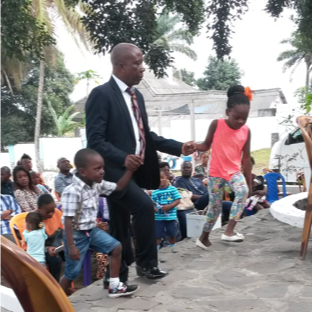See it. Say it. Sorted!

I take the train often in our new home country. I enjoy hearing many of iconic statements—like the famous “Mind the gap.”— that are part of the train-riding experience.
My favourite of these sayings plays over and over in stations and on the trains: “See It, Say It, Sorted.” I love these words of wisdom because they remind me of what God has called us to do in Matthew 18: “If a brother sins against you, go and show him his fault, just between the two of you. If he listens to you, you have won your brother over. But if he will not listen, take one or two others along, so that every matter may be established by the testimony of two or three witnesses.” Here, God gives us a pattern for dealing with conflict in a godly manner. When we “see” a hurt and “say” it, it gets “sorted.”
A Pattern for Problems
This is a valuable pattern that we can practice with students and use during teachable moments to help transform their lives. And the benefit is that once you have taught this pattern and practiced it, you have more time to teach because small annoyances are handled without your intervention.
There are different ways that younger children naturally try to deal with problems. The verbal child shouts out her annoyance expecting you to solve the problem: “Mary won’t share.” “Mark pushed me.” “Dave hurt my feelings.” On the other hand, the timid child will keep the infraction to herself and not tell you about the hurt or abuse.
God has a better way. God calls everyone to go to the person who caused hurt and speak to him privately, naming the hurt or sin, and wait for the response. Many times, the offender doesn’t even know that he was hurting another. He then has an opportunity to apologise, the matter is forgiven, and relationship restored.
Following this process helps all children. Verbal children learn to not shout out or bring more people into the problem than needed. Quieter children know that if they are not heard they can ask for help and will be supported to solve the conflict. As we train children to follow God’s pattern, our hope is that as they encounter more complicated conflicts, they will know to go to the other person first instead of talking to their friends and increasing the problem.
Practicing the Solution
Last year I was teaching EFL to eight-year-olds. One of the first things that we worked on was following this pattern. I was working in a country where we couldn’t openly share our faith, but I was still able to work with them to learn this godly principle.
I had the students act out a scene where someone was unkind, and we would practice this conversation: “Please stop.” “I’m Sorry.” “You are forgiven.” We had fun acting out silly situations, practicing the pattern and moving to showing forgiveness. Often young children don’t have the language to voice their frustrations and this pattern can give them the words to deal with the hurt in a healthy way.
Personal Involvement
But what happens when the offender doesn’t slow down, admit he hurt the other person, say he is sorry, and stop the activity? Once the hurt student has tried to go to the offender, she can ask for help to resolve the problem. Many times, I’ve asked a child who shouts out in line, “Tom pushed me,” if she had turned quietly to the other and asked them to stop.
Only if the hurt student has tried and the situation was not resolved will I step in to navigate the restoration process. We have a responsibility to teach the students in increasingly complicated situations to solve the problem in a biblical way that culminates with forgiveness and the relationship being restored.

See It, Say It, Sorted.” I love these words of wisdom and think they mimic what God has called us to do in Matthew 18. When you “see” and experience sin don’t be afraid to approach the person and “say” it, giving them a chance to repent. If that doesn’t work, ask for help from someone, working toward repentance and forgiveness: “Sorted!”
Dana Neff
Administrative Director for Open Schools World Wide
TeachBeyond, Global
Photo Credits:Train. Shepherd Media, via Needpix. Public Domain Image. See It. Say It. Sorted. Public Domain Image.







